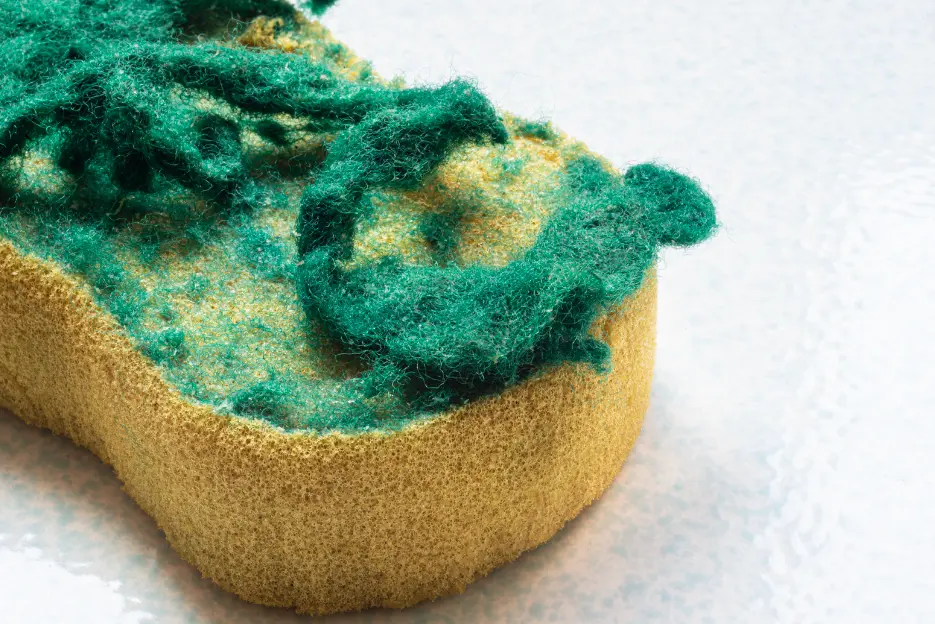
SHAH ALAM - Cleanliness and well-being are closely linked, as neglecting the former can negatively impact the latter.
Many people maintain a clean cooking area and enjoy a cozy home environment, providing daily meals in a hygienic setting.
However, one commonly overlooked item in this routine is the cleaning sponge used for washing dishes and cleaning surfaces, which can become a breeding ground for bacteria if not properly cared for.
Here’s why this seemingly innocent cleaning tool can be dangerous and even fatal:
1. It’s Dirtier Than a Toilet Seat
Studies have revealed that sponges can harbour more bacteria than toilet seats.
Though both are among the dirtiest items in a household, sponges are more likely to spread bacteria due to frequent contact with food and surfaces.
According to The Economic Times, a single sponge can hold up to 54 billion bacteria per cubic centimetre, which can easily transfer to other areas upon contact.
These bacteria, including harmful ones like Salmonella, can cause foodborne illnesses, especially when sponges come into contact with raw food like chicken and eggs.
2. Its Porous Structure Encourages Bacteria Growth
A study by Duke University’s biomedical engineers, cited by The Economic Times, highlighted that the damp and porous nature of sponges creates an ideal environment for bacteria to thrive.
This structure makes sponges more vulnerable to microbial growth than even standard agar plates used in labs.
3. Specific Health Risks
Contaminated sponges can introduce foodborne illnesses, which are often associated with dirty kitchens or restaurants.
These illnesses range from mild stomach issues to severe infections such as blood poisoning, meningitis, pneumonia, and even sepsis—a life-threatening condition that can lead to organ failure and death.
Some of the harmful bacteria found in sponges include:
Campylobacter: Causes diarrhea, abdominal pain, and fever, often from undercooked chicken.
Enterobacter cloacae: A natural gut bacterium that can lead to pneumonia, particularly in those with weakened immune systems.
E. coli: Known for causing foodborne illnesses, starting with stomach cramps and diarrhea, and leading to kidney damage in severe cases.
Klebsiella: Resistant to many antibiotics, it can cause pneumonia and urinary tract infections.
Moraxella osloensis: Known for causing the musty odour in damp clothes, it can also lead to joint inflammation and skin infections.
Salmonella: Commonly found in contaminated food and water, it can cause fever, cramps, and diarrhea.
Staphylococcus: Causes skin infections, including cellulitis and impetigo.
Proteus and Acinetobacter: Can cause sepsis and various other infections.
4. How to Avoid Contaminated Sponges
To reduce the risk of contamination, studies show that microwaving or boiling sponges can eliminate up to 99.9 per cent of bacteria.
Microwaving is more effective and can be done in just two minutes.
Following these preventive steps can help:
- Avoid cross-contamination by not allowing sponges to touch raw foods or dirty surfaces.
- Use separate sponges for different tasks and keep them dry, as bacteria thrive in moist environments.
- Allow sponges to air dry between uses.
- Use dish gloves to reduce the transfer of bacteria from hands to sponges.
- Regularly replace old sponges. With their affordable price, it’s easy to keep a stock of sponges and swap them out frequently.
- Choose eco-friendly, cellulose-based sponges made from wood fibers to reduce plastic waste. Though they may hold more bacteria, proper sanitisation can protect both humans and the environment.
- Consider using silicone sponges, which are less porous and provide fewer opportunities for bacteria to grow.
- Metal brushes, which are easier to sanitise with vinegar or hot, soapy water, are another good alternative.
- Unique methods like running sponges through the dishwasher or washing machine can also help sanitise them effectively.
By following these tips and being mindful of sponge hygiene, we can reduce the risk of bacteria-related illnesses and contribute to a healthier kitchen environment.
